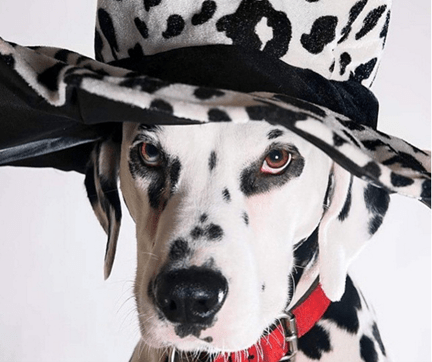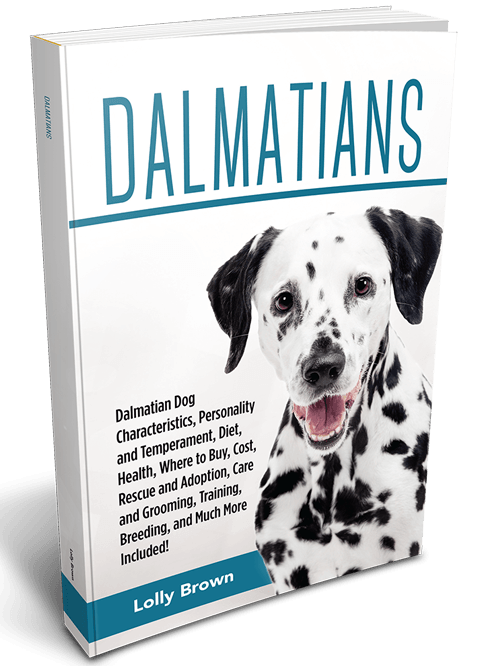CHAPTERS
Navigate to chapter
► Chapter One: Understanding Dalmatians
► Chapter Two: Things to Know Before Getting a Dalmatian
► Chapter Three: Purchasing Dalmatians
► Chapter Four: Caring for Dalmatians
► Chapter Five: Meeting Your Dalmatian’s Nutritional Needs
► Chapter Six: Training Your Dalmatian
► Chapter Seven: Grooming Your Dalmatian
► Chapter Eight: Breeding Dalmatians
► Chapter Nine: Showing Your Dalmatian
► Chapter Ten: Keeping Your Dog Healthy
Chapter Nine: Tips for Showing Your Dalmatian

Historically, Dalmatians were once used as circus dogs. This breed is not shy or averse to the spotlight so when properly trained, they could also be bred to be great show dogs. One of the joys of owning a pure-breed dog is having the pride to show them off. But before you get ahead of yourself, you should check if your Dalmatian has all the requirements of AKC to become a show dog. This chapter provides a summary of the standards of the AKC for a Dalmatian and how to prepare your dog for a show.
The AKC breed standard for the Dalmatian breed provides guidelines for both breeding and showing. AKC-registered breeders must select dogs that adhere to the standards of the breed and all Dalmatian owners who seek to show their dogs at AKC shows must compare them to the official breed standard as well. Below you will find an overview of the breed standard for the American Dalmatian breed:
General Appearance and Temperament
The Dalmatian is a medium to large dog with distinct spots, poised and muscular, swift and agile, capable of great speed and endurance, and wears an intelligent expression. The breed has a stable and outgoing temperament with no suggestion of shyness.
Head and Neck
The head is well-proportioned and in balance with the rest of the dog. The neck is arched, sufficiently long, free from throatiness and smoothly connects to the shoulders. The topline is smooth. The eyes are set moderately apart and well into the skull. They are somewhat round and medium in size, brown or blue or a combination of both in color. The ears are set high and close to the head, thin and fine in texture, wide at the base and gradually tapering to the tip. The muzzle is powerful, smoothly connected to the cheeks, parallel and about equal in length to the skull, and a scissors bite. The nose is black for black-spotted and brown for liver-spotted.
Body and Tail
The chest is deep and ample. The ribs are well sprung, gradually curving into a moderate tuck up. The back is level and strong. The tail is never docked and is a natural extension of the topline – it is carried with a slight upward curve. The flanks narrow through short, muscular and slightly arched loins.
Legs and Feet
The forelegs are straight, strong and sturdy. The hindquarters are powerful and well-muscled, parallel to each other from the point of the hock to the heel of the pad. The hocks are well let down. Feet are round and compact with thick elastic pads and arched toes.
Coat and Texture
The coat is short and fine and sleek.
Color
The dominant color should be white with black or liver spots. Spots should be mostly round, distinct and ideally shouldn’t be overlapping. They should be distributed evenly to give a pleasing appearance. The size varies – it could be as small as a dime or as big as a half dollar. Spots are usually larger on the body than other parts.
Size
The ideal height is 19 – 23 inches. The length of the body should be proportioned to its height.
Gait
The gait should be balanced, steady, effortless and powerful. They should have a certain dignified grace and agility that doesn’t waver because of their endurance.
Disqualifications
- Any dog under or over the standard size
- Shyness or timidity
- Abnormal position of eyelids or eyelashes
- Incomplete pigmentation of the eye rims and nose
- Underbite or overbite
- Ring tails and low-set tails
- Cowhocks
- Spots that are neither black nor liver
- Patches – solid mass of black or liver hair with no white
- Deafness
Continue Reading…
Want to read the entire thing?


